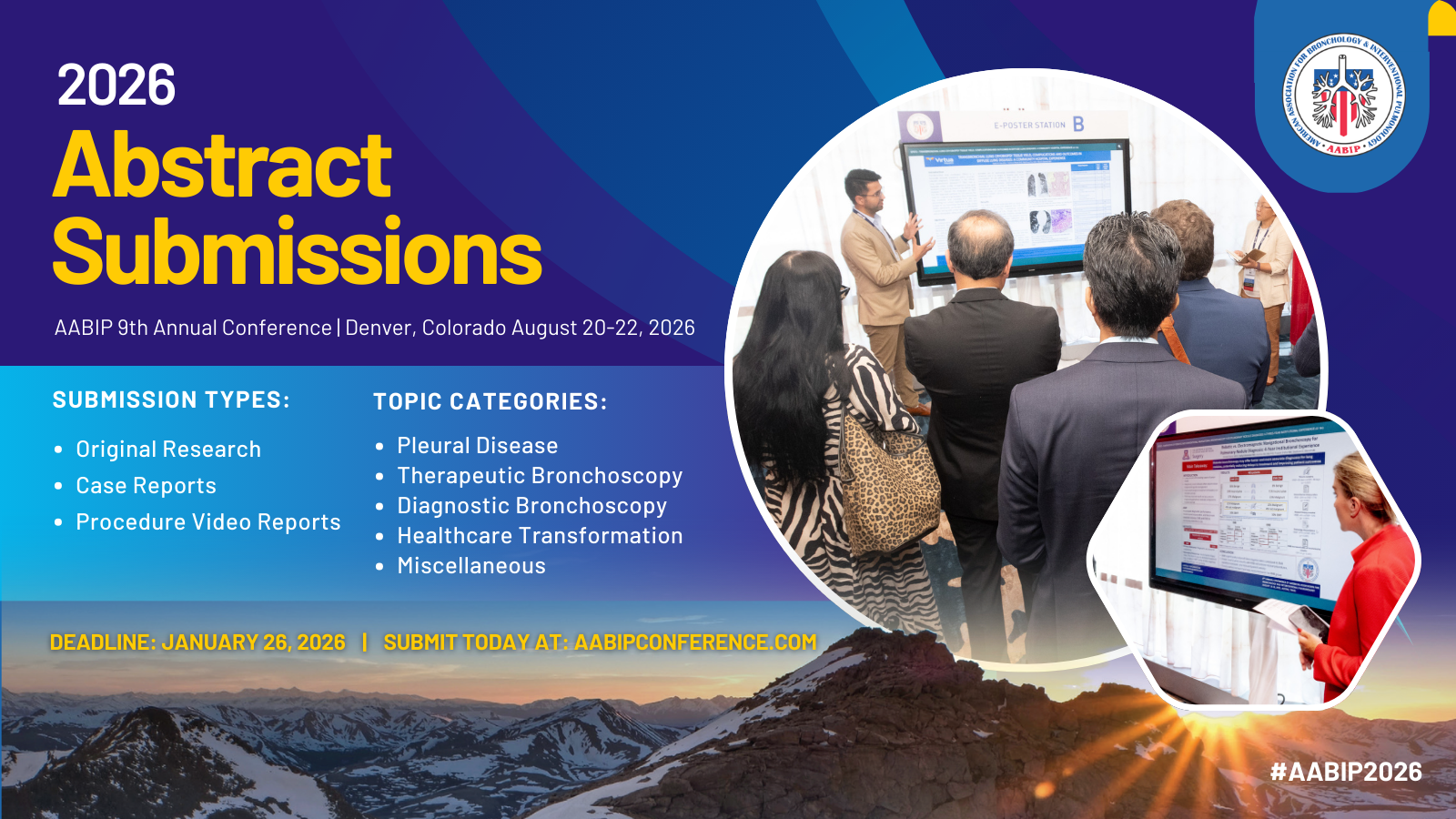IP Fellows Reading List
https://www.ncbi.nlm.nih.gov/pubmed/29433716
Review
Reference: Lerner AD, Yarmus L. Percutaneous Dilational Tracheostomy. Clin Chest Med. 2018;39(1):211-222.
Summary: Article reviews indications, contraindications, and procedure timing. It outlines a suggested plan for pre-procedure evaluation including ultrasound use. Procedure steps are included with pictures. It briefly goes over common procedure complications and post-procedure care.
Percutaneous Dilational Tracheostomy
https://www.ncbi.nlm.nih.gov/pubmed/23993821
Review
Reference: Hsia DW, Ghori UK, Musani AI. Percutaneous dilational tracheostomy. Clin Chest Med. 2013;34(3):515-26.
Summary: Article reviews different available methods for percutaneous dilational tracheostomy (PDT) including; Ciaglia method (most commonly used) with the Ciaglia single dilator being the most popular, Griggs dilational forceps technique, and translaryngeal tracheostomy method. Article also details procedure adjuncts: bronchoscopy and ultrasound. Finally, it gives a comparison of complications between PDT and surgical techniques. The last part of the review is a Special Circumstances part the includes case series and reports on PDT in patients with cervical spine injuries, obesity, and coagulopathy.
Percutaneous tracheostomy: a comprehensive review
https://www.ncbi.nlm.nih.gov/pubmed/29214070
Review
Reference: Rashid AO, Islam S. Percutaneous tracheostomy: a comprehensive review. J Thorac Dis. 2017;9(Suppl 10):S1128-S1138.
Summary: Article reviews tracheostomy methods; surgical and percutaneous. It details techniques for single dilator percutaneous tracheostomy with pictures included. Procedure contraindications with details regarding special patient populations; obese, coagulopathy, limited neck extension, previous tracheostomy, high ventilator settings, and hypotension are provided. Common procedure complications including: bleeding, tracheo-innominate artery fistula, obstruction of tracheal cannula, subcutaneous emphysema, tube displacement, tracheal stenosis, tracheoesophageal fistula, and stoma infection are discussed. Article also discusses role of ultrasound, bronchoscopy, and use of suture vs. no suture. Finally, it briefly reviews the process of decannulation.
Which percutaneous tracheostomy method is better? A systematic review
https://www.ncbi.nlm.nih.gov/pubmed/25185145
Review
Reference: Sanabria A. Which percutaneous tracheostomy method is better? A systematic review. Respir Care. 2014;59(11):1660-70.
Summary:
- Objective: Assess different methods of percutaneous tracheostomy in terms of successful performance of the procedure and its safety.
- Number of studied included: 14.
- Publication dates: Jan 1985 – Nov 2013.
- Methods analyzed: Ciaglia multiple dilator, Ciaglia Blue Rhino, Ciaglia balloon dilator (discontinued by manufacturer), Griggs, Fantoni, and PercTwist.
- Main outcomes: Complications and difficulty in performance. Additional outcomes: Hypoxemia and hypotension during procedure, major bleed (requiring any intervention), posterior tracheal tears, and minor bleeds.
- Tables: Good summary tables of each paper’s main characteristics, study events, and methodological quality.
- Conclusion: No distinct advantage of any one technique. Available information suggests that Blue Rhino is preferred because physicians have more experience with it. Composite literature does not allow definitive conclusion on the best percutaneous technique. The multiple dilator method was less difficult to perform, but had more minor bleeding.
- Note: Percutaneous tracheostomy is performed in low-risk patients and open tracheostomy is still the standard of care for most patients with high-risk anatomical or ventilatory factors.
Percutaneous techniques versus surgical techniques for tracheostomy
https://www.ncbi.nlm.nih.gov/pubmed/27437615
Review
Reference: Brass P, Hellmich M, Ladra A, Ladra J, Wrzosek A. Percutaneous techniques versus surgical techniques for tracheostomy. Cochrane Database Syst Rev. 2016;7:CD008045.
Summary:
- Objective: Evaluation of the effectiveness and safety of percutaneous techniques compared to surgical techniques commonly used for elective tracheostomy in critically ill patients (adults and children) to assess whether a difference in complication rates exists. Also, it evaluated whether complications were different based on groups, settings, level of operator experience, different percutaneous technique, or whether percutaneous technique was carried with or without bronchoscopic guidance.
- Inclusion Criteria: Randomized and quasi-randomized trials comparing percutaneous techniques (experimental intervention) with surgical techniques (control intervention).
- Number of studies included: 20, n=1652.
- Publication dates: 1990-2011
- Quality of evidence: Low for 5 of the 7 outcomes, very low for 1, moderate for 1.
- Primary Outcomes:
- Mortality directly related to procedure.
- Serious, life-threatening adverse events
- Secondary Outcomes:
- Non-life threatening events.
- Total number of peri- and post-operative complications and adverse events.
- Duration of the procedure.
- Wound infection/stomatitis.
- Unfavorable scarring.
- Major bleeding.
- Tracheostomy tube occlusion/obstruction, accidental decannulation, difficult tube exchange.
- Patient or caregiver satisfaction.
- Results: No difference in the rate of primary outcomes of mortality directly related to the procedure and serious, life threatening adverse events. Percutaneous tracheostomy significantly reduced the rates of two secondary outcomes; wound infection/stomatitis by 76%, and the rate of unfavorable scarring by 75%. No difference in the rate of other secondary outcomes: major bleeding and tracheostomy tube occlusion/obstruction, accidental decannulation, or difficult tube exchange.
- Conclusion: When compared to surgical tracheostomy, percutaneous tracheostomy significantly reduced the rate of wound infection/stomatitis (moderate quality evidence) and the rate of unfavorable scarring (low quality evidence due to imprecision and heterogeneity). With regards to mortality and rates of serious adverse events, there was low quality evidence that non-significant positive effects exist for percutaneous tracheostomy. In terms of major bleeding, there was very low-quality evidence that non-significant positive effects exist for percutaneous tracheostomy.
Early versus late tracheostomy for critically ill patients
https://www.ncbi.nlm.nih.gov/pubmed/25581416
Review
Reference: Andriolo BN, Andriolo RB, Saconato H, Atallah ÁN, Valente O. Early versus late tracheostomy for critically ill patients. Cochrane Database Syst Rev. 2015;1:CD007271.
Summary:
- Objectives: Evaluate the effectiveness and safety of early (≤10 days after tracheal intubation) versus late (>10 days after tracheal intubation) tracheostomy in critically ill adults predicted to be on prolonged mechanical ventilation with various clinical conditions.
- Inclusion Criteria: Randomized and quasi-randomized controlled trials comparing early tracheostomy (2-10 days after intubation) against late tracheostomy (>10 days after intubation).
- Number of studies included: 8 RCTs up to Aug 2013 with total n=1977.
- Primary Outcomes:
- Mortality (time to mortality or frequency of deaths at any time point: in hospital, intensive care unit (ICU), or after discharge).
- Duration of artificial ventilation.
- Secondary Outcomes:
- Length of stay in ICU (or frequency of tracheostomy at any time point).
- Ventilator-associated pneumonia at any time point.
- Laryngotracheal lesions at any time point (epiglottis, vocal cord, larynx; subglottic ulceration and inflammation; stenosis).
- Results: Lower mortality rates in early compared to late tracheostomy (moderate quality evidence). Divergent results were reported on the time spent on mechanical ventilation and no difference was noted for pneumonia, but the probability of discharge from ICU was higher at day 28 in the early tracheostomy group.
- Conclusion: Findings are suggestive of superiority of early over late tracheostomy. No high-quality information is available for specific subgroups with particular characteristics.
Ultrasound-Guided Percutaneous Dilational Tracheostomy: A Systematic Review of Randomized Controlled Trials and Meta-Analysis
https://www.ncbi.nlm.nih.gov/pubmed/29409380
Review
Reference: Gobatto ALN, Besen BAMP, Cestari M, Pelosi P, Malbouisson LMS. Ultrasound-Guided Percutaneous Dilational Tracheostomy: A Systematic Review of Randomized Controlled Trials and Meta-Analysis. J Intensive Care Med. 2020;35(5):445-452.
Summary:
- Objective: Investigate whether ultrasound (US)-guided PDT (intervention) is equivalent or superior to bronchoscopy-guided or anatomical landmark-guided PDT (control) with regards to procedure related complications.
- Primary outcome: Incidence of major procedural-related and clinical complication rates.
- Secondary outcome: Incidence of minor complication rates.
- Number of articles included: 4, with total n=588, all were single-center and unblinded. Two compared US-guided vs. landmark-guided, the other two were US-guided vs. bronchoscopy-guided.
- Major complications: Procedure related death, cardiac arrest, tracheal wall injury, false passage cannulation, pneumothorax, pneumomediastinum, tracheostomy cannula obstruction, esophageal injury, tracheoesophageal fistula, conversion to surgical tracheostomy, persistent hypotension (SBP <90mmHg for >5 minutes) and associated intervention needed (fluids or pressor infusion or repeated bolus), persistent acute hypoxia (saturation <90% for >5 minutes) major bleeding (requiring transfusion or surgical repair), and tracheostomy related sepsis.
- Minor complications: Transient hypotension (fluids, or single pressor or bolus), transient hypoxemia, atelectasis, accidental decannulation, tracheostomy stoma infection, localized minor bleeding (self-limiting, stopped with local compression, topical vasoconstrictive agent), localized subcutaneous emphysema, and local stomal infection not causing sepsis.
- Results: No difference in major or minor complications between patients in the intervention group when compared to the control group, but with high heterogeneity.
- Sensitivity analysis including landmark-guided only as a control showed lower rates of minor complications in US-guided group.
- Conclusion: US-guided PDT is safe and comparable to bronchoscopy-guided PDT with consideration of major and minor complications. US-guided seems to reduce minor complications when compared to anatomical landmark-guided PDT.
Advantages of US in percutaneous dilatational tracheostomy: randomized controlled trial and review of the literature
https://www.ncbi.nlm.nih.gov/pubmed/25102297
Clinical Trial
Reference: Yavuz A, Yılmaz M, Göya C, Alimoglu E, Kabaalioglu A. Advantages of US in percutaneous dilatational tracheostomy: randomized controlled trial and review of the literature. Radiology. 2014;273(3):927-36.
Background: Compare procedure time and complication rates of pre-incisional US evaluation and perioperative US guidance in PDT
PICO:
Populations:
- Inclusion: Adult, critically ill patients in ICU.
- Exclusion: Pediatrics (<16 years), high or unstable intracranial pressures, severe coagulation disorders, evident cervical spine precautions.
Intervention:
- Ultrasound evaluation of neck anatomy
Comparison:
- Physical exam and landmark approach of neck anatomy
Outcome:
- Time to procedure completion
- Ultrasound group: Puncture site designated at physical exam was reconsidered in 23.8%.
- Perioperative complications rates were lower in the ultrasound group; 7.8% vs. 15% in the landmark group, but not statistically significant.
- Mean procedure time: Ultrasound group 24.09 minutes ±8.05. Landmark group 18.62 minutes ±6.34 (P=0.001).
- Complications: Minor bleed, major bleed, transient oxygen desaturation, cranial migration of the guidewire, cuff perforation; none were statistically significant between the groups
Take Home:
- Use of US-guidance before and during PDT could render the procedure easier and safer with fewer complications, but slightly longer procedure time.
- Note: Article goes over technique of proper US neck evaluation and has great images. Table 2 gives details of how US impacted decision making, including in patients with short necks and in whom the initial plan was to undergo surgical tracheostomy.
Novel percutaneous tracheostomy for critically ill patients with covid-19
https://pubmed.ncbi.nlm.nih.gov/32339508/
Cohort
Reference: Angel L, Kon ZN, Chang SH, et al. Novel percutaneous tracheostomy for critically ill patients with covid-19. Ann Thorac Surg. 2020;110(3):1006-1011.
Background: In the early phase of COVID-19 pandemic, percutaneous tracheostomy was often delayed due to concern for aerosolization of the virus. This paper describes a novel technique for percutaneous tracheostomy and outcomes associated with it in order to help reduce potential aerosolization risk during the procedure.
PICO:
Population –
- COVID positive patients requiring mechanical ventilation for five or more days with anticipated prolonged mechanical ventilation need or ECMO for more than one day
- PEEP < 12 mm Hg, Fio2 < 60%, RR < 25, pCO2 of < 60 mm Hg
Intervention –
- Percutaneous tracheostomy performed with novel technique
- The novelty of the technique described involved inserting bronchoscope adjacent to the ETT and introduced through the vocal cords parallel to the ETT. The ETT cuff was deflated and ETT moved into distal trachea
Comparison –
Outcome –
- 96/98 patients successfully underwent percutaneous tracheostomy with novel technique
- Mean follow-up period was 11 +/- 6 days
- 40 (41%) remained on full support, 19 (19%) were undergoing weaning (on PS or CPAP), 32 (33%) were off mechanical ventilation, 19 (19%) were downsized, 8 (8%) were decannulated. 7 (7%) died.
- Five patients had significant bleeding (all on anticoagulation). One patient with standard percutaneous technique required surgical exploration
- Accidental decannulation – two patients
- None of the members of tracheostomy team had symptoms or tested positive for COVID-19
Take home: The novel tracheostomy technique is safe and feasible. It may be an alternative method for performing the procedure in situations of high-risk exposures like COVID 19.
Use of tracheostomy during the covid-19 pandemic: American college of chest physicians/American association for bronchology and interventional pulmonology/association of interventional pulmonology program director's expert panel report
Guidelines
https://pubmed.ncbi.nlm.nih.gov/32512006/
Reference: Lamb CR, Desai NR, Angel L, et al. Use of tracheostomy during the covid-19 pandemic: American college of chest physicians/American association for bronchology and interventional pulmonology/association of interventional pulmonology program director's expert panel report. Chest. 2020;158(4):1499-1514.
Summary: This document provides guidance and a consensus statement from intensivists and interventional pulmonologists from multiple institutions regarding tracheostomy placement in patients with respiratory failure secondary to COVID-19 pneumonia. The panel recommends tracheostomy placement in patients anticipated to require prolonged mechanical ventilation, though no conclusive recommendations could be made regarding the timing. In addition, the panel recommends performing the procedure using techniques that minimize the risk of aerosolization and exposure.
State of the art: percutaneous tracheostomy in the intensive care unit
https://pubmed.ncbi.nlm.nih.gov/34527365/
Review
Reference: Ghattas C, Alsunaid S, Pickering EM, Holden VK. State of the art: percutaneous tracheostomy in the intensive care unit. J Thorac Dis. 2021;13(8):5261-5276.
Summary: This review article provides an extensive summary of percutaneous tracheostomies in the ICU. The article provides evidence regarding timing of the procedure and the use of ultrasound and bronchoscopy during percutaneous tracheostomy placement. It also provides technical information regarding the procedure and special considerations for patient factors like obesity, coagulopathy and neurological illness.
Wound care management: tracheostomy and gastrostomy
https://pubmed.ncbi.nlm.nih.gov/34527367/
Review
Reference: Alsunaid S, Holden VK, Kohli A, Diaz J, O’Meara LB. Wound care management: tracheostomy and gastrostomy. J Thorac Dis. 2021;13(8):5297-5313.
Summary: The article provides a comprehensive overview of the management and post procedure care for tracheostomy and percutaneous gastrostomy tubes. It also serves as a good illustrative review of most of the complications related to these procedures.
|








